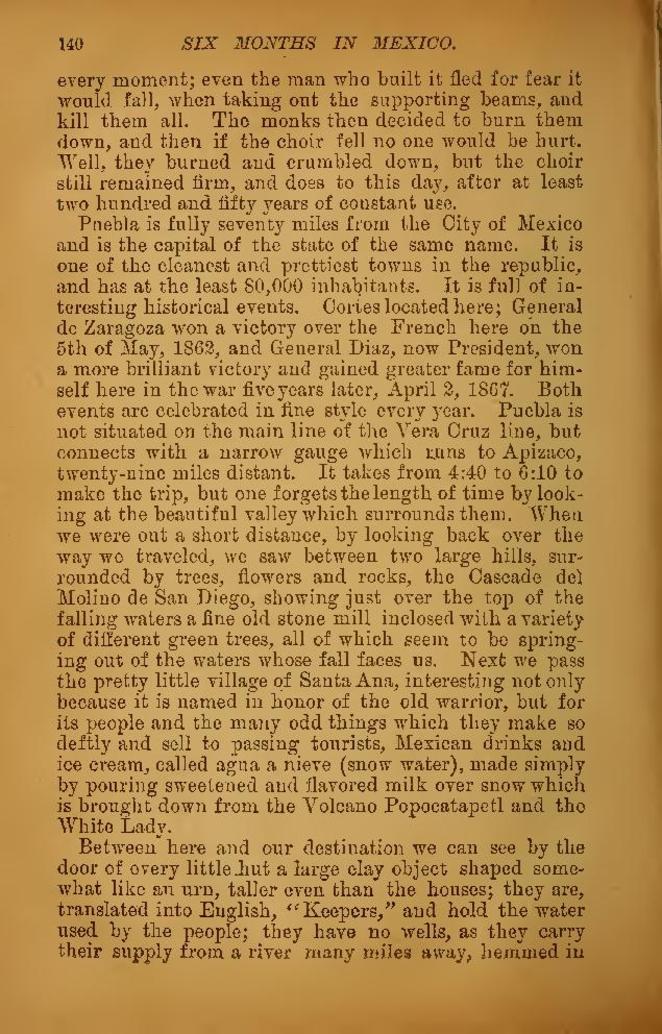every moment; even the man who built it fled for fear it would fall, when taking out the supporting beams, and kill them all. The monks then decided to burn them down, and then if the choir fell no one would be hurt. Well, they burned and crumbled down, but the choir still remained firm, and does to this day, after at least two hundred and fifty years of constant use.
Puebla is fully seventy miles from the City of Mexico and is the capital of the state of the same name. It is one of the cleanest and prettiest towns in the republic, and has at the least 80,000 inhabitants. It is full of interesting historical events. Cortes located here; General de Zaragoza won a victory over the French here on the 5th of May, 1862, and General Diaz, now President, won a more brilliant victory and gained greater fame for himself here in the war five years later, April 2, 1867. Both events are celebrated in fine style every year. Puebla is not situated on the main line of the Vera Cruz line, but connects with a narrow gauge which runs to Apizaco, twenty-nine miles distant. It takes from 4:40 to 6:10 to make the trip, but one forgets the length of time by looking at the beautiful valley which surrounds them. When we were out a short distance, by looking back over the way we traveled, we saw between two large hills, surrounded by trees, flowers and rocks, the Cascade del Molino de San Diego, showing just over the top of the falling waters a fine old stone mill inclosed with a variety of different green trees, all of which seem to be springing out of the waters whose fall faces us. Next we pass the pretty little village of Santa Ana, interesting not only because it is named in honor of the old warrior, but for its people and the many odd things which they make so deftly and sell to passing tourists, Mexican drinks and ice cream, called agua a nieve (snow water), made simply by pouring sweetened and flavored milk over snow which is brought down from the Volcano Popocatapetl and the White Lady.
Between here and our destination we can see by the door of every little hut a large clay object shaped somewhat like an urn, taller even than the houses; they are, translated into English, "Keepers," and hold the water used by the people; they have no wells, as they carry their supply from a river many miles away, hemmed in
